Breathe. We do it roughly 25,000 times a day, but until recently few of us gave much thought to this automatic bodily function.
"If there's some good to come out of Covid-19, it's that people are paying more attention to how they're breathing," said James Nestor, author of, Breath: The New Science of a Lost Art, which explores how we breathe, how that has changed and how to do it properly. "You can't be truly healthy unless you're breathing correctly."
How we breathe affects us at a cellular level. Research shows that changing the way we breathe can influence weight, athletic performance, allergies, asthma, snoring, mood, stress, focus and so much more. You can learn to breathe better, and these exercises can help.
Shut your mouth
About half of us are chronic mouth breathers, a practice that can irritate the lungs, increase the risk of respiratory infection and sap the body of moisture, and has been linked to bad breath, sleep apnea and other health conditions. Breathing in and out of the nose filters, heats and treats the air. It helps us take fuller, deeper breaths. It also allows us to absorb more oxygen and raises the intake of nitric oxide, a molecule that opens the blood vessels, which increases circulation and allows oxygen, blood and nutrients to travel to every part of the body. Immune function, weight, mood and sexual function are all influenced by nitric oxide.
For the nearly 40 per cent of people who suffer from chronic nasal obstruction because of allergies, sinusitis, a deviated septum or any of the other many causes, shutting the mouth can be a challenge.
The first step is to clear congestion. “There are sprays and neti pots,” Nestor said. “I put eucalyptus oil under my nose.”

Congestion clearing An exercise in, The Oxygen Advantage, by Patrick McKeown, may help decongest the nose: sit up straight, gently inhale and exhale through the nose, then pinch both nostrils shut. Shake your head up and down or from side to side until you feel the need to breathe.
Take a slow breath in through the nose, or through pursed lips if the nose is still congested. Breathe calmly for 30 seconds to a minute and repeat five more times.
Take some deep breaths
The average adult engages as little as 10 per cent of the diaphragm, the jellyfish-shaped muscle under the lungs primarily responsible for respiration. Shallow chest breathing can overburden the heart, strain the neck and shoulder muscles, and keep you in a constant state of low-grade stress. Diaphragmatic breathing, also known as belly breathing, can retrain you to breathe more deeply, allow the lungs to soak up more oxygen and reduce stress.
Belly breathing Lie flat on your back with your knees bent. Place one hand on your chest and the other on your belly just below your rib cage. Breathe in slowly through the nose so your stomach expands against your hand. The hand on your chest should not move.
Slowly exhale through the nose or pursed lips and feel the belly move down to its original position. Repeat for five to 10 minutes. As you get more comfortable with the technique, practice sitting or standing.
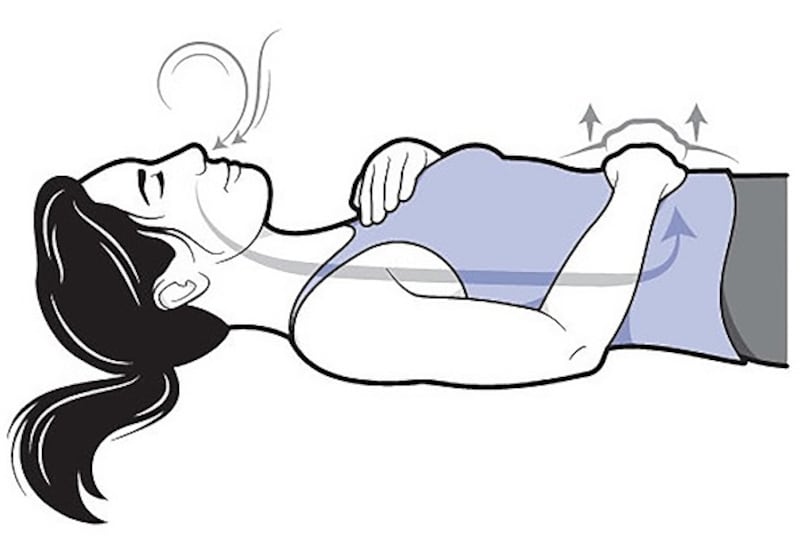
Grab a ball and roll away
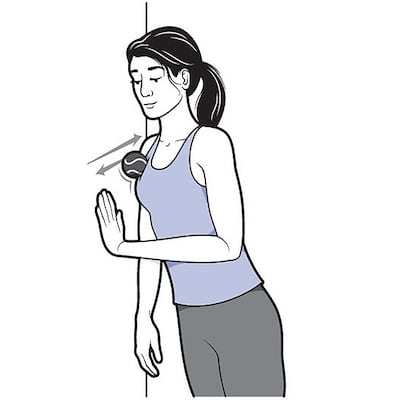
When you breathe into the chest, muscles in the neck, shoulders, upper chest and back try to help out and can become tight. And when muscles of the upper body are chronically tight, they can restrict normal breathing.
Massaging the upper body with a tennis or massage ball can break this cycle and loosen, lengthen and relax the muscles.
Pectoral roll Stand facing a wall and place the ball under your collarbone at the sternum. Lean against the wall and slowly roll the ball back and forth, side to side, along the valley below your clavicle several times.
Repeat on the other side of your chest.
Intercostal roll Standing with your side to the wall, raise the arm closest to the wall overhead and place the palm on the wall. Put the ball under the armpit at the top of your ribs, lean into the wall, and gently rock back and forth. Lower the ball 1 inch and repeat.
Continue down your side, massaging the intercostal muscles between your ribs, until you reach your lower ribs. Repeat on the other side.
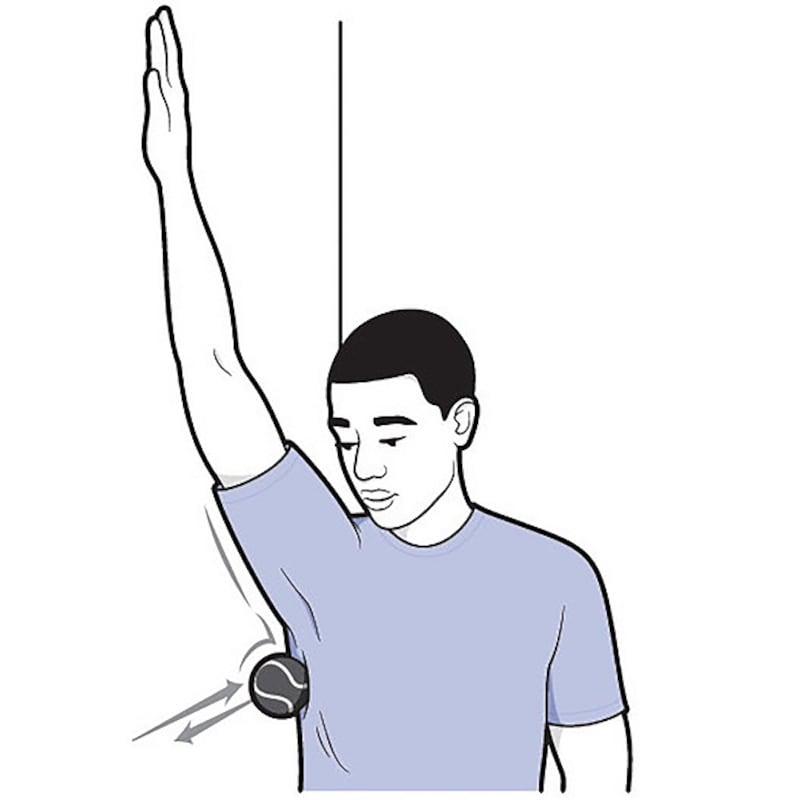
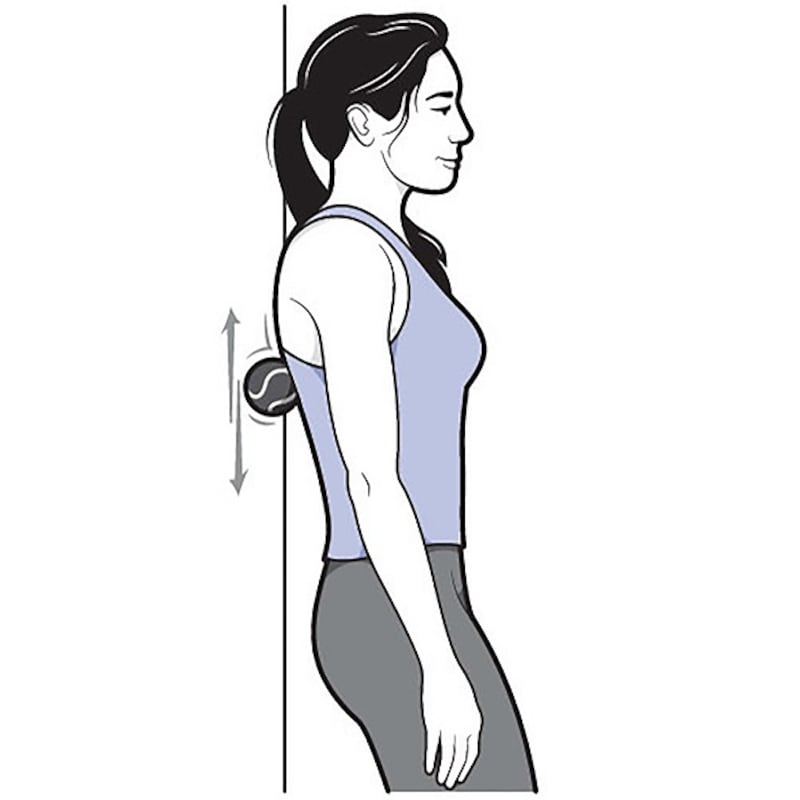
Upper back roll Turn so your back faces the wall. Place the ball at the top of your trapezius, the upper back muscle, and lean into the wall. Gently roll the ball along the outer edge of the shoulder blade by bending and straightening the knees and then lifting and lowering the heels.
Think about tracing the line a tank top strap would make. Repeat on the other side.
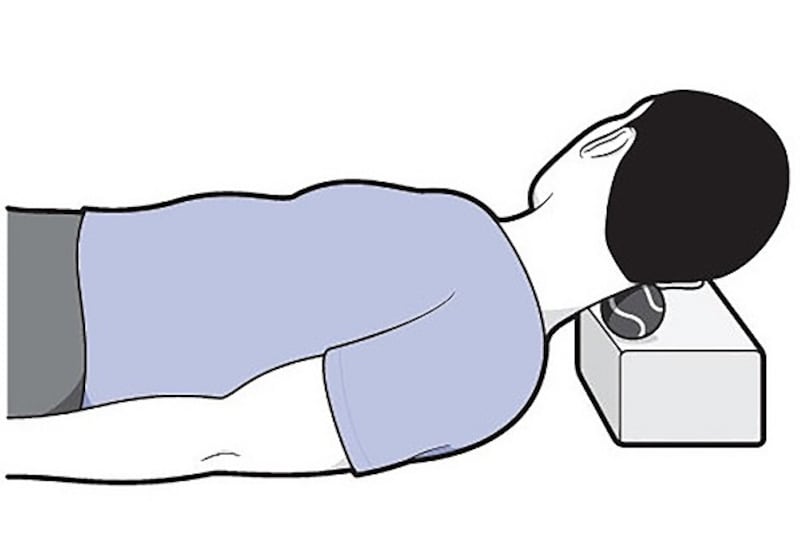
Neck release Come down onto your back with a yoga block or thick book under your head. Turn your head to the right and place the ball on your upper neck behind your ear. Take five deep breaths.
Then gently nod three or four times, and shake your head three or four times. Switch sides.
Stand up straight
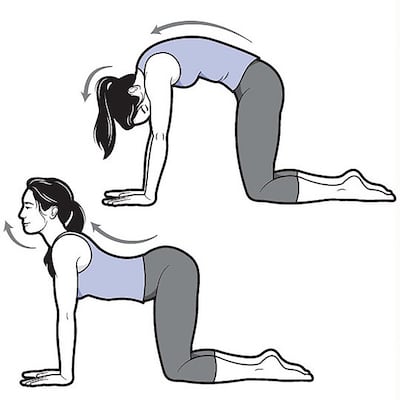
Poor posture restricts the diaphragm and slows down activities like blood flow and digestion. These exercises stretch the legs, lengthen the back and open the shoulders, helping to draw the shoulders back and decompress the spine.
Cat/Cow Come into a tabletop position on the floor, with hands under shoulders and knees under hips. As you inhale, drop the belly, press the chest forward and look up. Exhale, tuck the chin toward the chest and round the spine. Flow between these cow and cat yoga positions for three to five breaths, following your breath.
Wide-legged forward fold Stand with your feet wider than hips distance, typically about 4ft apart. Turn your toes in. Interlace your hands behind your back. Inhale, open the chest and bring the palms closer together. As you exhale, fold forward and allow your arms to hang overhead.
If it’s uncomfortable to hold your palms together, hold on to a towel or yoga strap. Stay here for five to 10 breaths.
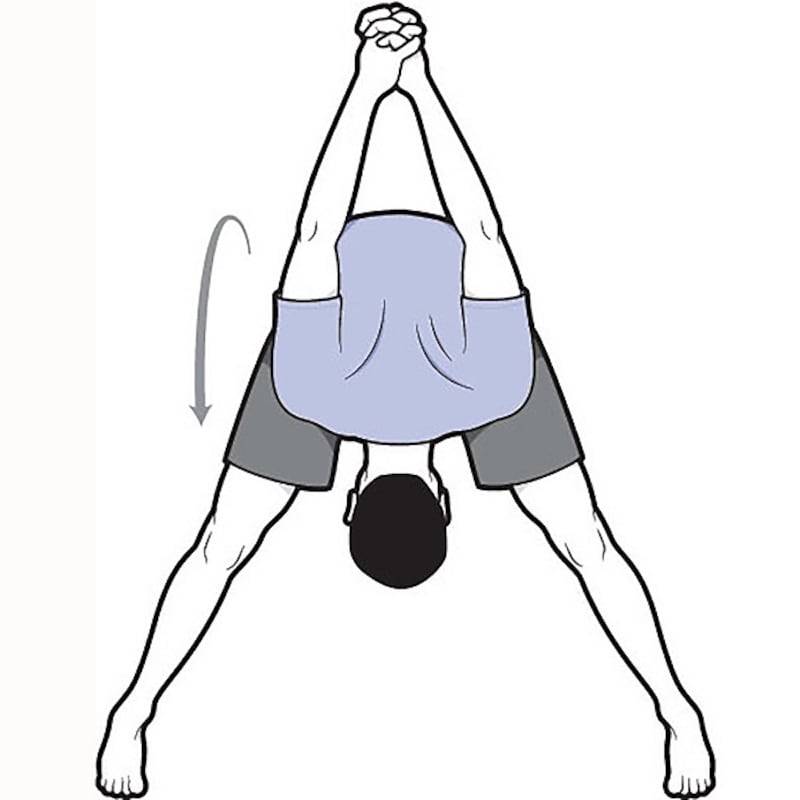
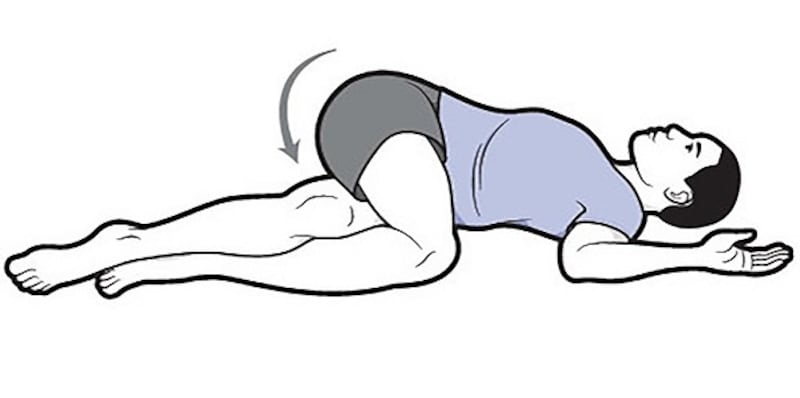
Supine spinal twist Lie on your back, hug your knees into your chest and take a few breaths. Then extend your arms out in opposite directions, making a T shape. As you exhale, lower your knees to the right, keeping both shoulder blades on the floor. You can deepen the twist by looking over your left shoulder.
Take several breaths here, inhale and move the knees back to centre, exhale and lower them to the left and take the twist in the other direction. – New York Times







